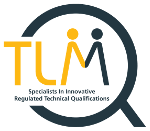Design and development of qualifications
Resource and Arrangements Policy for Qualification Development
1. Overview
This policy outlines how the organisation plans and manages resources for the development, delivery, and ongoing maintenance of the qualifications it awards, in compliance with Ofqual’s regulatory requirements.
2. Human Resource Planning
2.1 Competency Management
Before initiating qualification development, a comprehensive risk assessment is conducted to:
- Evaluate market demand for the qualification.
- Identify required Subject Matter Experts (SMEs) and secure their engagement.
- Ensure alignment of learning objectives with industry standards.
- Confirm compliance with Ofqual’s regulatory standards.
2.2 Internal Competency Review
The organisation maintains a quarterly review of the Competency Matrix to assess the availability and level of expertise within the team. This tool enables the identification of any shortfall in resources, allowing timely adjustments to meet the demands of qualification development and delivery.
2.3 Use of External Expertise
For qualifications in new sectors, external specialists are engaged during the initial stages to:
- Provide sector-specific and assessment expertise.
- Ensure qualification content is valid, relevant, and robust.
These experts work alongside the internal team throughout the development phase and provide ongoing support during the qualification lifecycle.
2.4 Sustainability Measures
To ensure sustainable outsourcing arrangements:
- Rigorous selection processes are used to appoint external partners based on expertise and alignment with regulatory standards.
- Governance and quality assurance measures oversee external contributions.
- Knowledge transfer strategies are implemented to build internal capacity over time.
- Evolving Resource Needs: Resource levels adapt to the qualification lifecycle's demands.
- Development Phase: High levels of external expertise ensure rigorous design and compliance.
- Post-Development: Resource use shifts to an on-demand consultation model, addressing testing or piloting feedback.
- First Cohort: Resource scaling supports effective delivery, assessment, and quality assurance.
- Ongoing Adjustment: Resource allocation evolves based on lessons learned and ongoing evaluation.
3. Data and Hardware Resource
During qualification development, data is collected to:
- Analyse hardware and software requirements.
- Estimate resource needs based on uptake data from similar qualifications.
Requirements are assessed during the development phase using the Qualification Development Checklist, ensuring resources align with current and anticipated demands.
4. Financial Viability
A contractual commitment is made with centres to deliver qualifications in accordance with Ofqual’s Conditions of Recognition. Financial planning ensures that the organisation can meet these commitments by securing appropriate resources for development, delivery, and assessment processes.
5. Ongoing Monitoring and Review
5.1 Continuous Improvement
- External partners’ performance is continuously monitored to ensure alignment with organisational objectives.
- Periodic reviews of qualification content and delivery methods maintain compliance and relevance.
5.2 Stakeholder Engagement
Stakeholder feedback from SMEs, centres, and learners is incorporated into reviews to enhance the quality and sustainability of qualifications.
5.3. Inclusive Design & Accessibility
TLM designs qualifications and assessments to be usable by the widest possible range of learners from first principles, in line with Ofqual General Condition E4.2(d) (minimising the need for Reasonable Adjustments) and Condition G6 (clear arrangements for Reasonable Adjustments)

